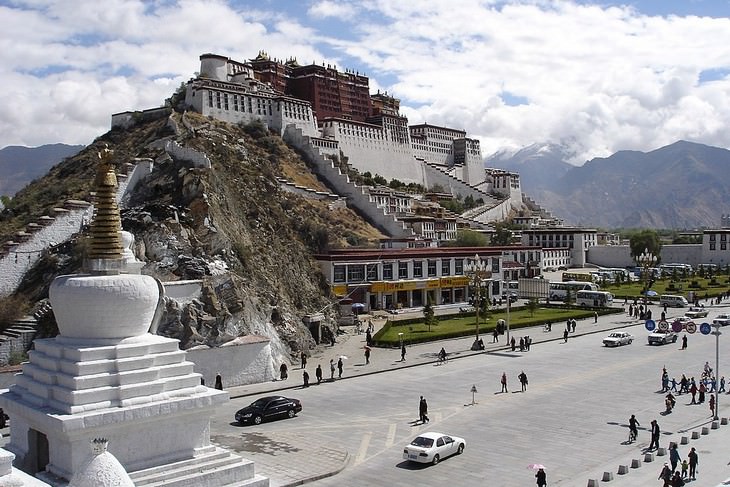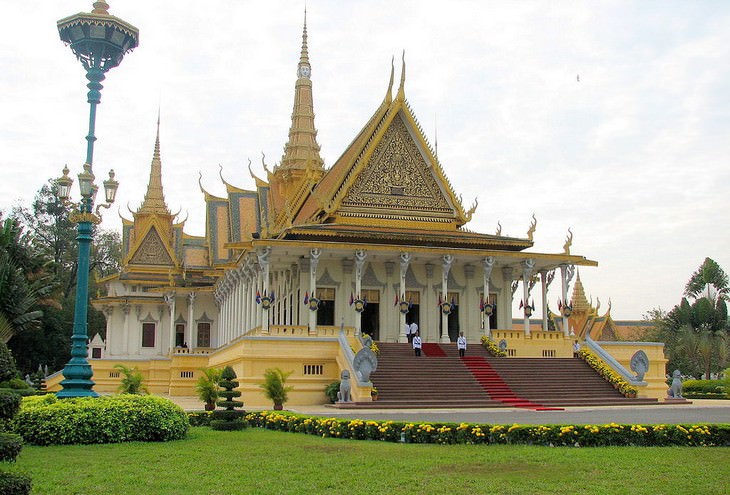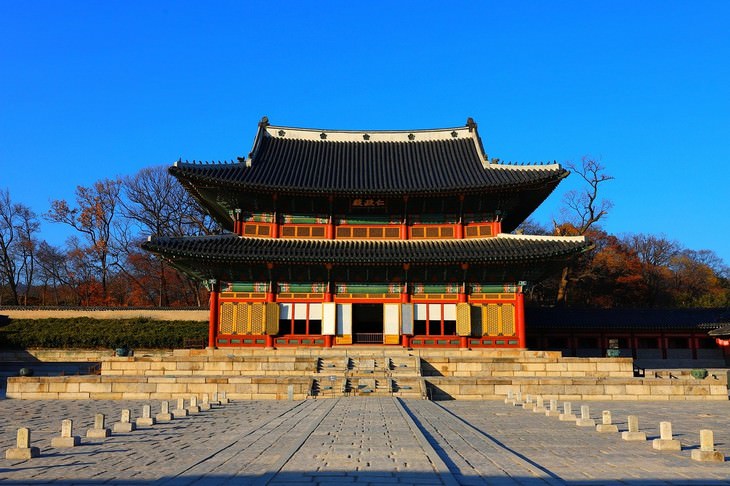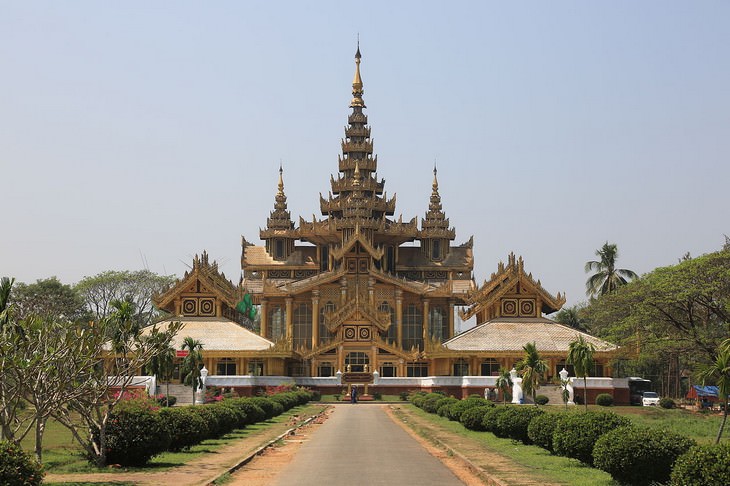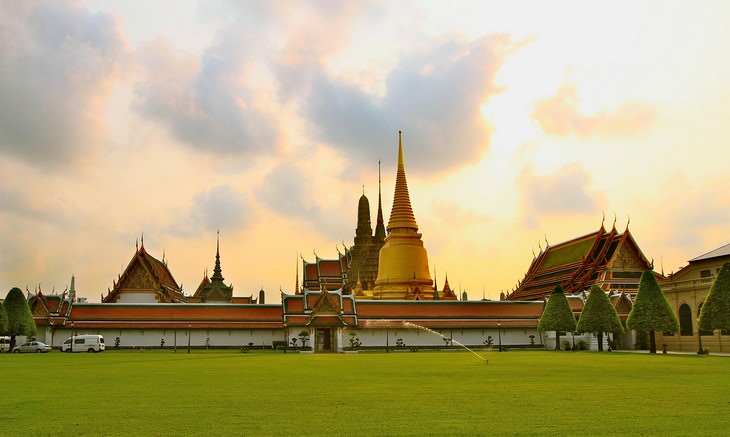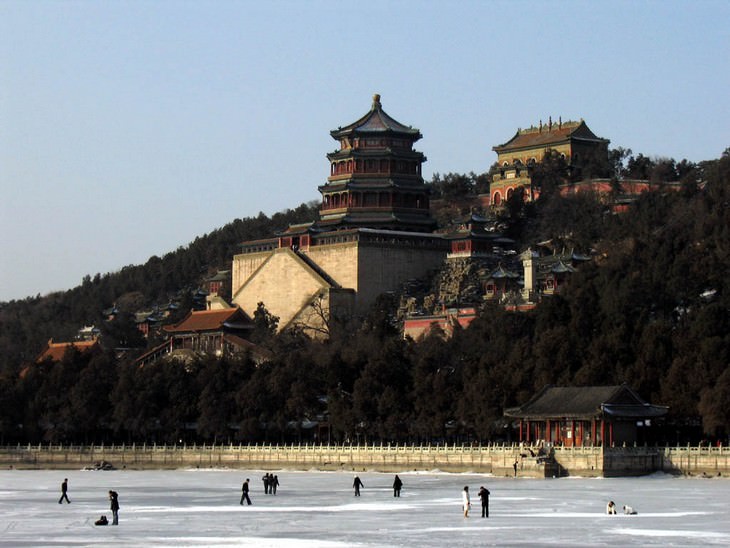1. Potala Palace, Lhasa, Tibet
Located in Lhasa, the capital city of the Tibetan Autonomous Region, the stunning palace featured in the picture stands on a hill known as "Red Mountain." For centuries, it served as the primary residence of the Dalai Lama, the spiritual and political leader of Tibet. However, in 1959, after the failure of a popular uprising against China, the 14th Dalai Lama, Tenzin Gyatso, was forced to flee to the Indian city of Dharamsala, and the Potala Palace lost its status as the Dalai Lama's seat. The palace complex is situated between two other hills, which, along with the "Red Mountain," are collectively known as "the three shields of Tibet." Currently, the palace houses a treasure museum that contains wall paintings, Tengka (traditional Tibetan silk painting and embroidery), and sculptures. In 1994, UNESCO declared the palace a world heritage site.
2. The Imperial Palace of Tokyo, Japan
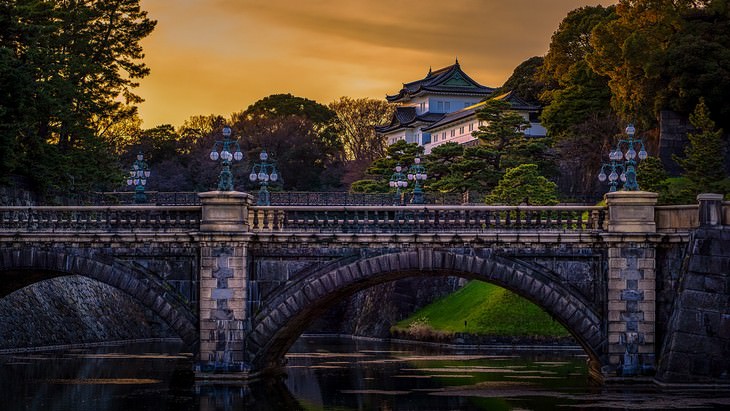
The structure surrounded by this magical pastoral landscape is home to more than 1,000 employees, including cooks, gardeners, musicians, fishermen and the royal guards responsible for the operation of the official residence of the Emperor of Japan. The palace complex covers an area of about 3.4 square kilometers and is surrounded by protective trenches (moats), guard towers and thick woods designed to create a clear buffer between the emperor's residence, located in the heart of Tokyo, and the city itself. In one of the palace gardens, about 350 Bonsai trees are hundreds of years old, which are considered a symbol of ancient Japanese art, and there are several workers assigned to take care of their growth and cultivation. The palace is the main place where official political ceremonies are held. Tourists are allowed to visit the eastern garden, but the building is opened to visitors only twice a year: December 23 - the emperor's birthday, and January 2 - in honor of the new civil year.
3. The Taj Mahal, Agra, India
Agra's Taj Mahal is a renowned structure worldwide and is also known as the "Crown of the Palace." This impressive building was built in the 16th century by the Mughal Empire's emperor, Shah Jahan, as a memorial site for his beloved third wife, Mumtaz Mahal. Construction began in 1632 when the emperor hired a Persian architect, which was reflected in the building's Muslim motifs with Hindu influences. The complex spans an area of about 700 dunams and follows the principles of symmetry, with identical right and left parts that are mirror images of each other.
4. The Royal Palace, Phnom Penh, Cambodia
The Royal Palace is the most well-known attraction in Phnom Penh, the capital of Cambodia. King Norodom I established the palace in 1866, and it became the Cambodian royal family's residence. The complex is situated on the banks of the Mekong River. It covers a large area, including gardens, a reception palace, and pagoda-style burial buildings for the royal family. One of the buildings in the complex is designed in a French style. It was gifted to the King of Cambodia by Napoleon III, the president of the Second French Republic.
5. Changdeokgung Palance, Seoul, South Korea
In Seoul, South Korea, there is a building that is part of the five grand palaces constructed by the Joseon Dynasty. It is known as the "Palace of Prosperous Virtues" and is recognized for its integration with the natural surroundings and adherence to traditional Korean architecture. Although it was destroyed by fire during the first Japanese invasion in 1592, it was rebuilt in 1607. It has since survived multiple fires and has been restored to its original state.
6. The Independence Palace, Ho Chi Minh City, Vietnam
The Independence Palace, located in Ho Chi Minh City, is a significant site in Vietnam that represents the country's victory, peace, and territorial integrity. It is named after the leader of North Vietnam from 1945 to 1969, who is considered the "Father of the Nation." The palace has a long history, controlled by different governments over the years, starting from the French colonial period in Southeast Asia, through World War II and the Japanese invasion, and ending with the Vietnam War. In 1975, the palace was breached by North Vietnamese forces led by Ho Chi Min. This marked the end of the war and transformed the palace from the South Vietnamese president's seat to a symbol of victory. The palace houses many authentic relics that have survived the difficult times the site has faced over the years.
7. Kumsusan Palace, Pyongyang, North Korea
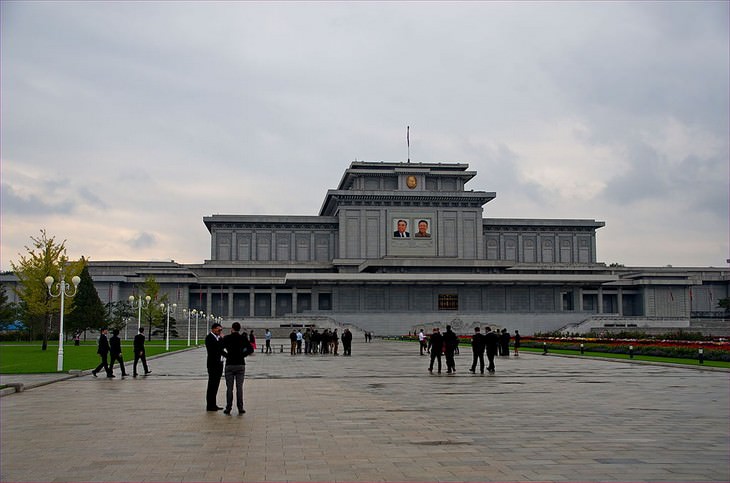
Kumsusan Palace was constructed by North Korea's first president, Kim Il-sung, in 1976 in Pyongyang, serving as his official residence and government seat. Following his death, his son and successor, Kim Jong-il, ordered the palace to be transformed into a mausoleum for the "Eternal President of the Republic," at an estimated cost of around 900 million dollars. The palace was later expanded to include Kim Jong-il and features large portraits of the two leaders on its front.
8. Kanbawatsadi Palace, Bagu, Myanmar
Bagu, a city in Myanmar, may not be well-known, but it is intriguing due to its stark contrasts. Despite the neglected and unclean streets, the city is home to some of the most stunning attractions in Myanmar. Among them is the Kanbawatsadi Palace, constructed in the 16th century to honor King Bynaung of the Tongu Dynasty. He ruled the city when it was Lower Burma's capital. The palace, consisting of 76 rooms and halls, was destroyed by fire after 30 years of construction. However, it was restored in 1990 and became a museum open to the public.
9. The King of Thailand's Palace, Bangkok, Thailand
The King of Thailand's Palace is a renowned collection of royal structures constructed in central Bangkok along the Chao Phraya River. It served as the official residence of the Siamese kings from 1782 until 1925 when the Chitralda Palace took over. Among these buildings, the Emerald Temple is the most prominent. It houses an emerald Buddha statue and a museum with valuable items, including white elephant bones. These bones were a crucial symbol of the Thai monarchy.
10. The Summer Palace, Beijing, China
The Summer Palace in Beijing is not just a typical grand building. It is a vast imperial garden covering an expansive area of around 3 square kilometers, consisting of several buildings and captivating scenic views. This stunning location was established about 15 km northwest of Beijing. It served as the residence of the last four emperors of China during the Qing Dynasty. The final emperor Pui made it his private property and gradually opened it to the public in 1914. The palace grounds contain shallow lakes, streams, planted forests and gardens. Notably, the most prominent features of the site are Kunming Lake, which covers three-quarters of the total area of the complex, and the "Hill of Longevity," which oversees the lake and houses numerous temples.

